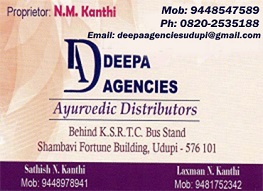Control Unit
- Controls, coordinates and synchronizes the activities of the computer system
- This acts as nerve center for the system
- Controls the system operation by routing the selected data items to the selected processing h/w at the right time
- It decodes and translates instructions. And generates necessary signals for ALU and other units
- The timing signals for different operations are generated by control unit
- Instruction Interpretation
- Instruction Sequencing
Instruction Interpretation:
- Reads the instruction from memory, recognizes the instruction type, gets necessary operands and sends them to the appropriate functional units.
- The signals necessary to perform operations are taken to processing unit and results obtained are sent to the specified destination Instruction sequencing:
- Control unit determines the address of the next instruction to be executed and loads it into the program counter
Steps to perform the operation C=A+B
- The instruction is selected (because PC has the address of Instruction)
- Decodes the operation code (That is addition)
- Gets the location of the data (Gets the address of A and B)
- Gets the data and routes it to ALU (Data stored in location A and B)
- Gives instruction to the ALU ( Instruction to Arithmetic Unit)
- Processed information is stored in memory location (Result is stored in C)
Operational Concepts
There are many different machines present in the world but every machine is not called as a computer. According to mathematician John Von Neumann, for a machine to be a computer it must have the following features
- Addressable memory that holds both instructions and data
- An arithmetic logic unit
- A program counter
A Computer executes the following simple loop for each program
PC=0 (pc means program counter)
do{
instruction=memory [pc++]
decode (instruction)
fetch (operands)
execute
store (results)
} while (instruction != halt);
John Von Neumann Architecture

Components of a comp. architecture Based on Von Neumann stored program control concepts are:
CPU: The engine of the Computer that executes programs
ALU: Used for arithmetic and logical operations
Register file: Collection of several registers.
PC (Program Counter) also called Instruction Pointer, is a register that holds the memory address of the next instruction to be executed
IR (Instruction register) This register holds the current instruction being executed
ACC (Accumulator) This register will hold the result of an operation performed by ALU
Lesson on Arithmetic and Logical unit with circuit diagram << Previous
Next >> Fundamental Computer
Support us generously: contact@lessons2all.com
Our aim is to provide information to the knowledge seekers.

.jpg)

.jpg)






